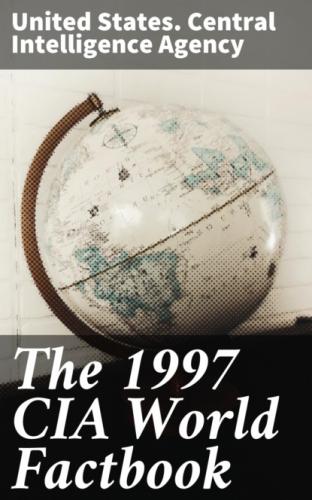GDP: purchasing power parity - $18.1 billion (1996 est.)
GDP - real growth rate: NA%
GDP - per capita: purchasing power parity - $800 (1996 est.)
GDP - composition by sector: agriculture: 56% industry: 15% services: 29%
Inflation rate - consumer price index: 240% (1996 est.)
Labor force: total: 7.1 million by occupation: agriculture and animal husbandry 67.8%, industry 10.2%, construction 6.3%, commerce 5.0%, services and other 10.7% (1980 est.)
Unemployment rate: 8% (1995 est.)
Budget: revenues: $NA expenditures: $NA, including capital expenditures of $NA
Industries: small-scale production of textiles, soap, furniture, shoes, fertilizer, and cement; handwoven carpets; natural gas, oil, coal, copper
Electricity - capacity: 371,000 kW (1993)
Electricity - production: 670 million kWh (1994)
Electricity - consumption per capita: 35 kWh (1995 est.)
Agriculture - products: wheat, fruits, nuts, karakul pelts; wool, mutton
Exports: total value: $80 million (1996 est.) commodities: fruits and nuts, handwoven carpets, wool, cotton, hides and pelts, precious and semi-precious gems partners : FSU, Pakistan, Iran, Germany, India, UK, Belgium, Luxembourg, Czechoslovakia
Imports: total value : $150 million (1996 est.) commodities: food and petroleum products; most consumer goods partners: FSU, Pakistan, Iran, Japan, Singapore, India, South Korea, Germany
Debt - external: $2.3 billion (March 1991 est.)
Economic aid: recipient: ODA; about $56 million in UN aid plus additional bilateral aid and aid in kind (1996) note: US provided $450 million in bilateral assistance (1985–93); US continues to contribute to multilateral assistance through the UN programs of food aid, immunization, land mine removal, and a wide range of aid to refugees and displaced persons
Currency: 1 afghani (AF) = 100 puls
Exchange rates: afghanis (Af) per US$1 - 17,000 (December 1996), 7,000 (January 1995), 1,900 (January 1994), 1,019 (March 1993), 850 (1991); note - these rates reflect the free market exchange rates rather than the official exchange rate, which is a fixed rate of 50.600 afghanis to the dollar
Fiscal year: 21 March - 20 March
@Afghanistan:Communications
Telephones: 31,200 (1983 est.)
Telephone system: domestic : very limited telephone and telegraph service international: satellite earth stations - 1 Intelsat (Indian Ocean) linked only to Iran and 1 Intersputnik (Atlantic Ocean Region)
Radio broadcast stations: AM 6, FM 0, shortwave 2
Radios: 1.8 million (1996 est.); note - about 60% of families own a radio
Television broadcast stations: NA note: one television station run by Jumbesh faction provides intermittent service
Televisions: 100,000 (1993 est.)
@Afghanistan:Transportation
Railways: total: 24.6 km broad gauge: 9.6 km 1.524-m gauge from Gushgy (Turkmenistan) to Towraghondi; 15 km 1,524-m gauge from Termiz (Uzbekistan) to Kheyrabad transshipment point on south bank of Amu Darya
Highways: total: 21,000 km paved: 2,793 km unpaved: 18,207 km (1995 est.)
Waterways: 1,200 km; chiefly Amu Darya, which handles vessels up to about 500 DWT
Pipelines: petroleum products - Uzbekistan to Bagram and Turkmenistan to Shindand; natural gas 180 km
Ports and harbors: Kheyrabad, Shir Khan
Airports: 33 (1996 est.)
Airports - with paved runways: total: 16 over 3,047 m: 3 2,438 to 3,047 m: 4 1,524 to 2,437 m : 2 under 914 m: 7 (1996 est.)
Airports - with unpaved runways: total: 17 2,438 to 3,047 m: 3 1,524 to 2,437 m: 12 914 to 1,523 m: 2 (1996 est.)
Heliports: 3 (1996 est.)
Military
Military branches: NA; note - the military does not exist on a national basis; some elements of the former Army, Air and Air Defense Forces, National Guard, Border Guard Forces, National Police Force (Sarandoi), and tribal militias still exist but are factionalized among the various groups
Military manpower - military age: 22 years of age
Military manpower - availability: males age 15–49 : 5,813,298 (1997 est.)
Military manpower - fit for military service: males : 3,118,004 (1997 est.)
Military manpower - reaching military age annually: males: 231,250 (1997 est.)
Military expenditures - dollar figure: $NA
Military expenditures - percent of GDP: NA%
Transnational Issues
Disputes - international: some support from RABBANI and MASOOD to anti-government Islamic fighters in Tajikistan's civil war; support to Islamic militants worldwide by some factions; question over which group should hold Afghanistan's seat at the UN
Illicit drugs: world's second-largest illicit opium producer after
Burma (1,230 metric tons in 1996 - down 2% from 1995) and a major
source of hashish
______________________________________________________________________
ALBANIA
@Albania:Geography
Location: Southeastern Europe, bordering the Adriatic Sea and Ionian
Sea, between Greece and Serbia and Montenegro
Geographic coordinates: 41 00 N, 20 00 E
Map references: Europe
Area: total: 28,750 sq km land: 27,400 sq km water: 1,350 sq km
Area - comparative: slightly smaller than Maryland
Land boundaries: total: 720 km border countries: Greece 282 km, The Former Yugoslav Republic of Macedonia 151 km, Serbia and Montenegro 287 km (114 km with Serbia, 173 km with Montenegro)
Coastline: 362 km
Maritime claims: continental shelf: 200-m depth or to the depth of exploitation territorial sea : 12 nm
Climate: mild temperate; cool, cloudy, wet winters; hot, clear, dry summers; interior is cooler and wetter
Terrain: mostly mountains and hills; small plains along coast
Elevation extremes: lowest point: Adriatic Sea 0 m highest point : Maja e Korabit 2,753 m
Natural resources: petroleum, natural gas, coal, chromium, copper, timber, nickel
Land use: arable land: 21% permanent crops: 5% permanent pastures: 15% forests and woodland: 38% other: 21% (1993 est.)
Irrigated land: 3,410 sq km (1993 est.)
Natural hazards: destructive earthquakes; tsunamis occur along southwestern coast
Environment - current issues: deforestation; soil erosion; water pollution from industrial and domestic effluents
Environment
